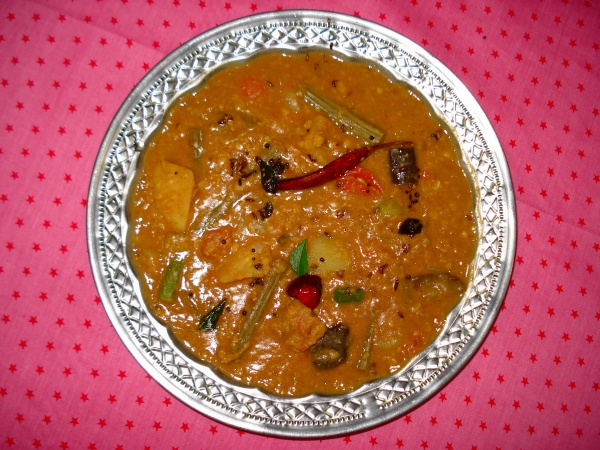Facts About Sambar
Sambar, also known as sambaar, is a hearty lentil-based vegetable stew that is a staple in South Indian and Sri Lankan kitchens. Made from dal (lentils) and tamarind broth, this delicious dish has a rich history dating back to the 17th century. There is even a legend that attributes its invention to Tamil kings of the mid-1700s or the Maratha ruler Sambhaji.
To prepare sambar, you'll need a variety of vegetables such as okra, drumstick, carrot, radish, potato, tomato, and eggplant. The magic ingredient is sambar powder, a fragrant spice mix made from roasted lentils, red chilies, fenugreek seeds, and coriander seeds. Depending on the region, you might also find spices like cumin, black pepper, or even grated coconut in the mix.
The cooking process is straightforward: start by boiling the vegetables with tamarind pulp, sambar powder, turmeric, salt, and asafoetida until they are half-cooked. Then, add the cooked lentils and continue cooking until the vegetables are tender. To finish, add a spice-scented oil for tempering, often flavored with mustard seeds, curry leaves, and other spices. You can also experiment with variations such as using moong dal and pumpkin.
Sambar exhibits many regional variations. In Karnataka, it's called saaru or huli and may have slight differences in ingredients and flavors. In Andhra Pradesh, you'll find sambar made with onions, bitter gourd, pumpkin, and tomatoes. Similar dishes without lentils are known as kuzhambu in Tamil Nadu and pulusu in Andhra Pradesh.
Traditionally, sambar is served with steamed rice as a main course. It is also a beloved side dish for breakfast items like idli and dosa. In Southern India, a typical meal might include rice mixed with sambar, followed by rice mixed with yogurt. Sambar truly holds a special place in South Indian cuisine, enjoyed in various forms across different regions.

 Nepal
Nepal